Every first time visitor of Venice regards the Clock Tower (Torre dell’Orologio) on Piazza San Marco with admiration. However, very few visitors take the opportunity to visit the Clock Tower, or even to look at the second clock on the other side of the building. In this post, I will share with you some information on the history and the intriguing details of the Clock Tower, as well as my experience with the guided tour.
History of the Clock Tower
The Clock Tower was commissioned by Doge Agostino Barbarigo in 1495. Zuan Carlo Rainieri created the new clock, while Mauro Codussi built the structure between 1496 and 1499. The 2 side wings, with the terraces, were added in the following 5 years. The last restoration of the Clock Tower was completed in 2006.
The descendants of Mauro Codussi remained in charge of the maintenance of the clock and lived in the Clock Tower until 1996. After they moved out, the clock machinery was moved to the centre of the former (small) living room. Unfortunately, many original parts have been removed and replaced. The clock mechanics are now serviced by Piaget.
The Clock Tower has 2 façades: one facing San Marco and one towards the Merceria. On the San Marco side, you will notice 5 different sections: the archway, the blue astronomical clock, the statue of Virgin Mary in between the hours and minutes, the winged San Marco lion and finally the Moors on the roof. The Rialto side is simpler with only a clock above the archway.
The archway
The Clock Tower rests on a triumphal arch, which created a link between the government on Piazza San Marco and the market and financial centre on Rialto. The best-known side, towards San Marco, is the most beautiful one with its vibrant gold and blue colours. It was designed to welcome and impress the visitors, merchants at that time, who entered Venice via the lagoon. The clock on the other side is more basic as it was merely for the locals.
When you pass under the arch from Piazza San Marco, you will see a narrow door on your left side. This is the entrance to the tower.
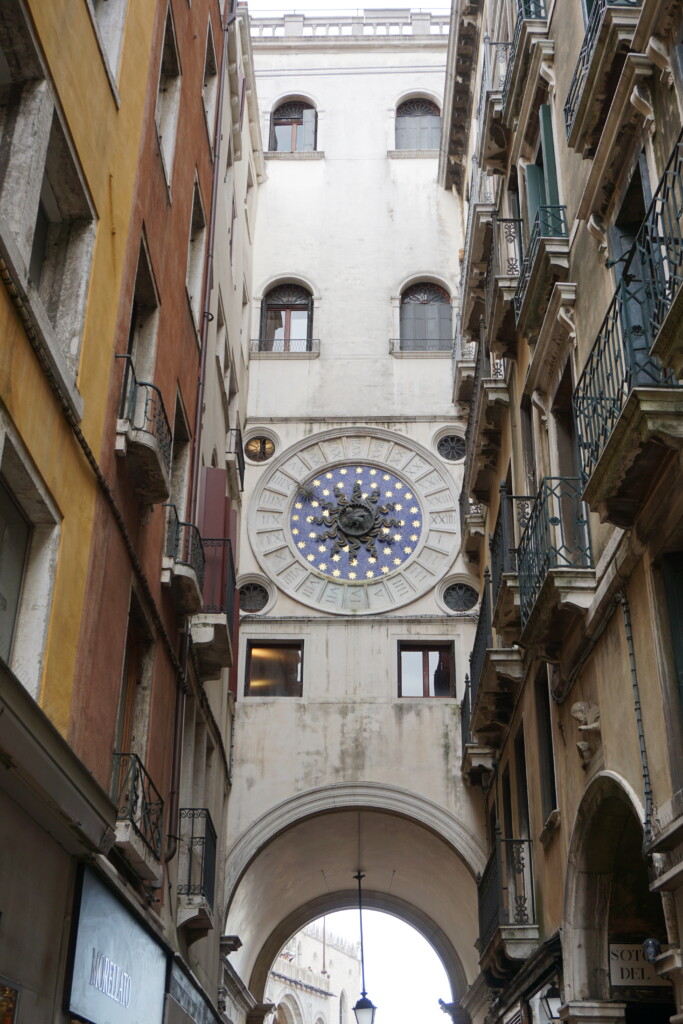
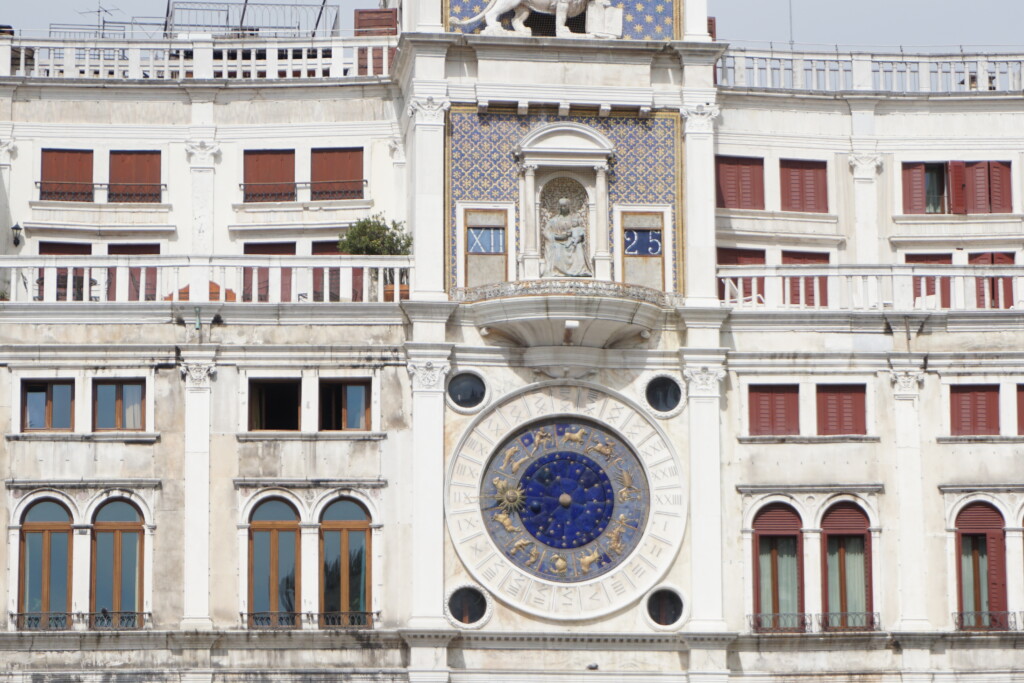
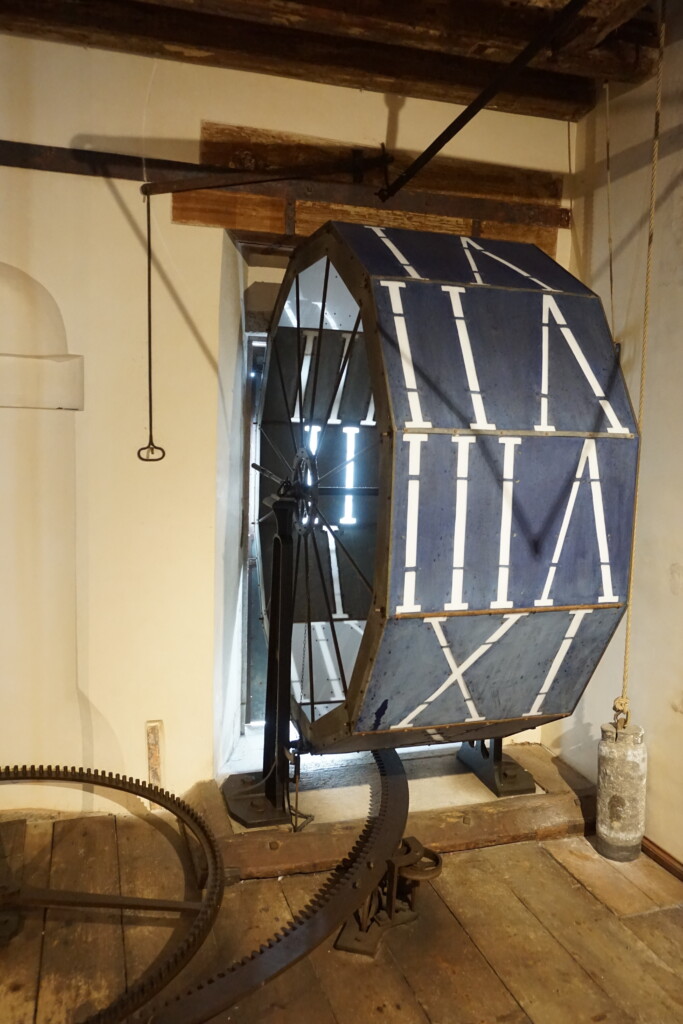
The clock facing the Merceria
This clock can be seen from the Merceria Orologio. It has a fixed marble circle with 24 hours in Roman numerals. Within, there is a mosaic with golden stars and the San Marco lion. The hand for the hours is decorated with the sun.
The astronomical clock
The astronomical clock on the San Marco side is not only beautifully designed, but it’s also very complicated from a technical point of view and hides lots of impressive details. The outer marble circle is inscribed with 24 hours in Roman numerals. On the inner circles, you can see the signs of the Zodiac and the related constellations, the names of the months and the number of the days. The hour hand has the form of a sun. There is no indication of minutes. Finally, you can also see the disk with the earth and the moon, which rotates to show its various phases. The outer circle is fixed, but all the others rotate on their own so you can see all the information at one glance. This visual quickly informed the naval officers about the tides and best times to sail.
DID YOU KNOW? Until the end of the Venetian Republic in 1797 (see also ‘A short introduction to the complicated history of Venice’), the days in Venice were counted from the first hour of the night or sunset, and not from midnight. For example, in winter, the day could start at 16.45, while in summer this could be at 21.45. The workday started with sunrise, so for instance on the 17th or 12th hour. Hence, you will notice that the clock doesn’t start to count (at the top) from midnight. The number I is located approximately in the middle at the right side. The upper part represented more or less the day (depending on the season), while the lower part of the hours showed the night.
The barrel clock with hours and minutes
Above the astronomical clock, you can see 2 large numbers mounted on huge barrels. The hours on the left are in Roman format, while the minutes on the right are Arabic numerals. The minutes are counted in steps of 5 minutes, as the numerals would be too small to read if they had to put 60 on one barrel. For the prisoners who were sentenced to death and hanged between the pillars in front of the lagoon, their last visual memory was the time they were killed.
During the guided tour, you can see the complex mechanical machinery with pulleys, weights and counterweights. It steers not only the (astronomical) clocks on both sides of the tower, but also the barrels for hours and minutes, the Moors and, when necessary, the angel and the three wise men. Once you have seen this impressive piece of work, you will look with different eyes at the outside of the Clock Tower.
Three wise men
Twice per year, on Epiphany and on the Festa della Sensa (Ascension), the routine of the Clock Tower is slightly different. Every hour, the archangel Gabriel and the three wise men appear through the doors which show the hours and minutes. Their little procession stops to greet the Virgin Mary before they move back inside. The statues are the original 18th century wooden sculptures. If you are in Venice on one of these days, don’t miss this unique opportunity. You can even see the mechanical figures nod their heads. On all the other days, they are exhibited inside the Clock Tower, so you can admire them during the tour.
The barrel installation blocks the movement of the three kings, so a special mechanism to raise and lift it backwards is activated on these 2 days. This gives free access to the doors and the circle on which the three wise men and the angel are mounted.
Two Moors
Finally, on top of the Clock Tower, you can see 2 male bronze figures with a hammer. The old bearded man hits the bell two minutes before the hour to indicate the time that passed. The young man hits it two minutes after the hour as he represents the future. This is called a re-striking mechanism. Each Moor strikes the bell one to twelve times, depending on the hour.
The bronze statues were cast in 1497 by Ambrogio della Ancore. The term Moors refers to the dark colour of the metal. The body is hinged at the waist so they actually move their upper body when striking the bell. The bell is created by Master Simone.
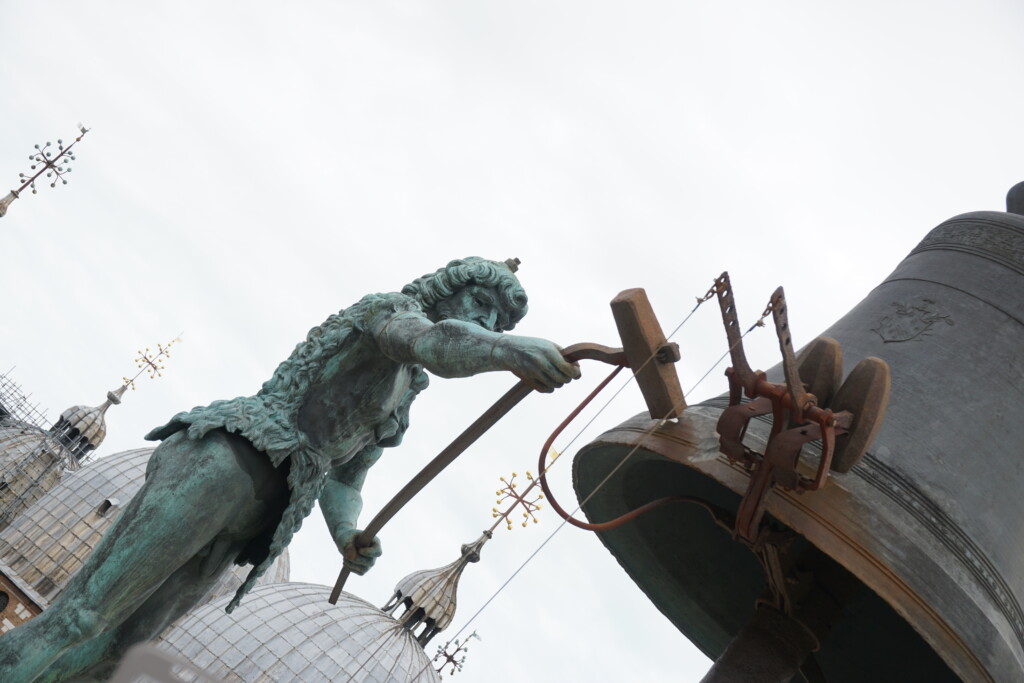
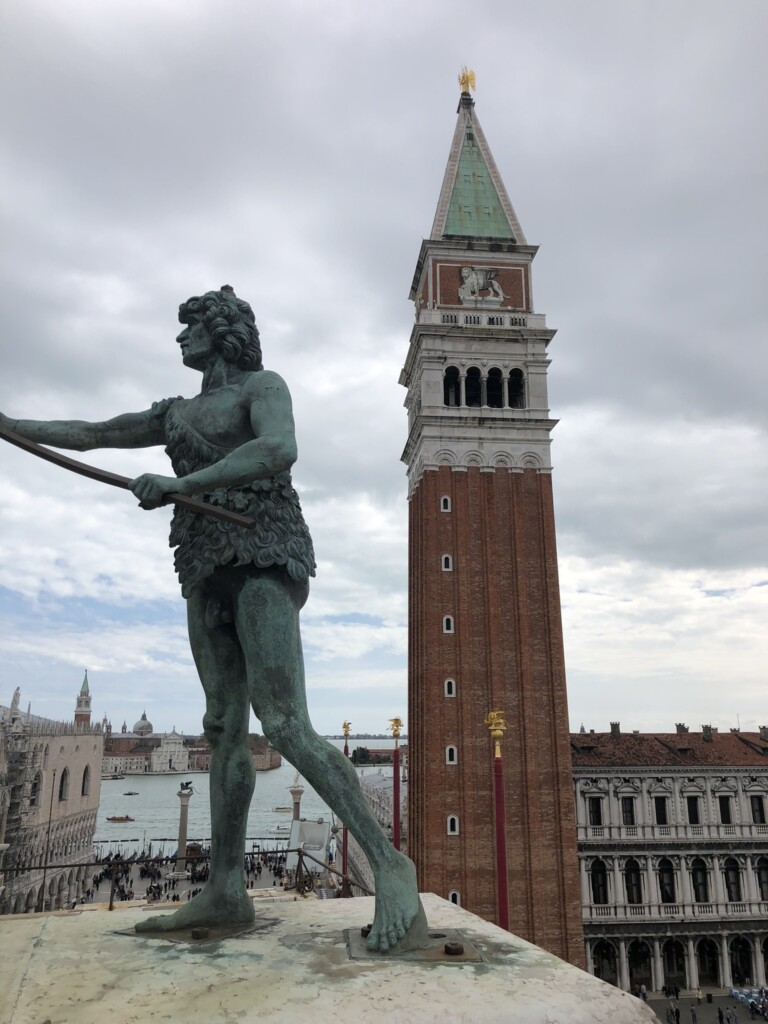
Guided tour
You can only visit the Clock Tower (Torre dell’Orologio) with a guided tour, organized by the Fondazione Musei Civici Venezia. They are organized daily, in Italian, English and French. Groups are limited to 12 people. The price is 14 euros and includes a visit to the Museo Correr.
INSIDER TIP: The Clock Tower is not the same as the bell tower. Don’t make the same mistake as the other guests in my group who thought we would be climbing the campanile. They were very disappointed when we entered the small Clock Tower.
Even though the visit is very interesting, the tours are not very popular. My group for instance counted only 4 visitors and one guide. However, I still recommend to make a reservation online before your trip to Venice to make sure you can attend on the day and hour that you prefer. Alternatively, you can buy the ticket at the Museo Correr ticket office.
This is also the location for the start of the tour. A guide picks you up to walk from Museo Correr to the Clock Tower. Once inside, the visit takes approx. 45 minutes. The tour starts with a general explanation about the Clock Tower, before you move up the different flights to look at the clock mechanics. It’s a narrow staircase so if you don’t like small rooms, this is not the tour for you. It ends on the terrace next to the Moors for a rooftop view over Venice and the Basilica.
Enjoy your visit!
